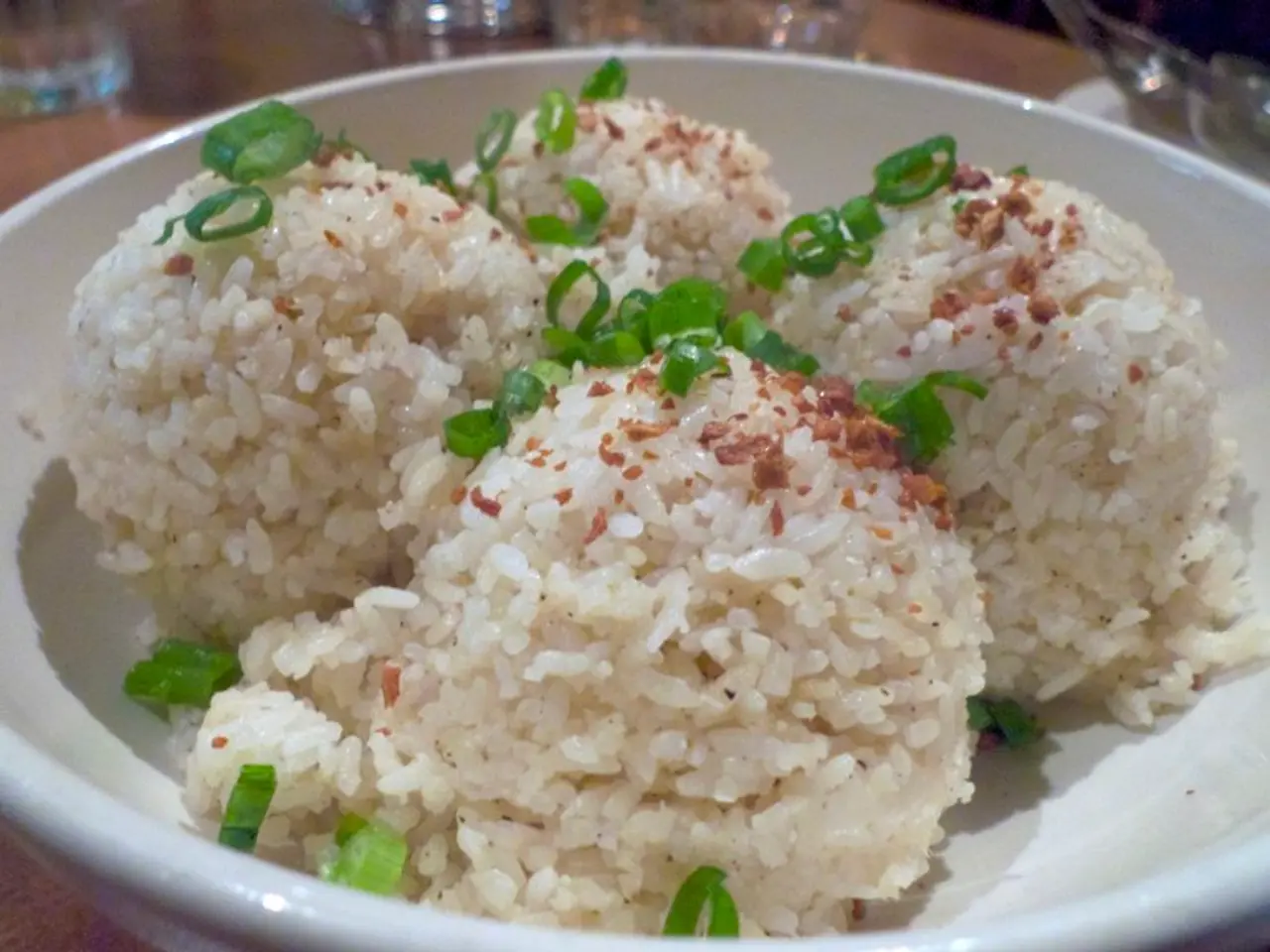Diabetic Rice: Understanding Carb Count, Nutritional Aspects, and Guidelines for Selection
For individuals with diabetes, managing blood sugar levels is crucial, and the type of rice consumed can play a significant role. Here's a guide to the recommended rice types and practical tips for diabetes-friendly rice consumption.
## Recommended Rice Types for Diabetes
1. **Brown Rice** - A whole grain that retains its bran and germ layers, making it higher in fibre, vitamins (especially B vitamins), and minerals. - Has a lower glycemic index (GI) than white rice, which means it raises blood sugar more slowly. - Associated with reduced risk of type 2 diabetes and better blood sugar control.
2. **Black Rice (Forbidden Rice)** - Contains high levels of anthocyanins, powerful antioxidants with health benefits. - Higher in protein and fibre compared to white rice, helping to slow sugar absorption. - Offers a chewy texture and nutty flavour.
3. **Red Rice** - Naturally pigmented and retains its bran layer, making it a good source of fibre and nutrients. - Has a lower GI and a stronger, earthier flavour than white rice.
4. **Wild Rice** - Technically not rice but an aquatic grass with a lower glycemic index and high in dietary fibre and antioxidants. - Helps slow the release of sugar into the bloodstream. - Nutty taste and chewy texture.
5. **Brown Basmati Rice** - Aromatic long-grain rice with a higher fibre content than white basmati. - Has a lower glycemic index, making it suitable for blood sugar management.
## Why Choose Whole Grain Rice?
- **Lower Glycemic Index:** Whole grain varieties like brown, black, and red rice have a lower GI, resulting in slower digestion and less impact on blood sugar levels. - **Higher Fibre and Nutrients:** These rices are rich in fibre, vitamins, and antioxidants, supporting overall health and helping to control appetite and blood sugar. - **Reduced Diabetes Risk:** Diets high in white rice are linked to increased risk of type 2 diabetes, while whole grain alternatives may help reduce this risk.
## Rice Varieties to Limit or Avoid
- **White Rice** - Refined grain with most bran and germ removed, resulting in lower fibre and nutrient content. - Higher GI, leading to faster blood sugar spikes.
## Summary Table
| Rice Type | Fibre Content | Glycemic Index | Key Benefit for Diabetes | |---------------------|---------------|----------------|------------------------------------| | Brown Rice | High | Low | Slower sugar release, more nutrients| | Black Rice | High | Low | Rich in antioxidants, fibre | | Red Rice | High | Low | Nutrient-rich, slow digestion | | Wild Rice | High | Low | High fibre, antioxidants | | Brown Basmati Rice | High | Low | Low GI, aromatic | | White Rice | Low | High | Not recommended for diabetes |
## Practical Tips
- **Portion Control:** Even the best rice for diabetes should be eaten in moderation to manage carbohydrate intake. - **Combine with Vegetables and Protein:** Pair rice with non-starchy vegetables and lean protein to further stabilise blood sugar. - **Avoid Highly Processed Rice:** Choose whole grain varieties over refined or processed rice whenever possible.
In summary, brown, black, red, wild, and brown basmati rice are the best choices for a healthful diet for people with diabetes due to their lower glycemic index and higher nutrient and fibre content. White rice should be limited or avoided for optimal blood sugar management.
All these rice options, including brown, black, red, wild, and brown basmati rice, are excellent for individuals with diabetes due to their lower glycemic index and higher nutrient and fiber content. These whole grain varieties, such as brown, black, and red rice, offer benefits beyond blood sugar control, like rich fibre content, vitamins, and antioxidants for overall health. On the other hand, white rice should be limited or avoided, as it has a higher glycemic index, leading to faster blood sugar spikes and lower nutrient content. To maintain a healthy and balanced diet, practicing portion control, combining rice with vegetables and protein, and choosing whole grain varieties over highly processed ones are crucial tips. Furthermore, these nutritious rice choices align with broader health-and-wellness priorities, such as fitness-and-exercise, nutrition, cooking, lifestyle, food-and-drink, and global-cuisines, contributing to a healthy, depression-free, and science-backed approach to combating obesity, Alzheimer's, and various health complications.




